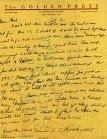The Massie Trial
"Upon Darrow's death in 1938, his friends gathered to honor the man who had tirelessly advanced so many progressive causes. They wrote essays and poems to praise his legacy of support for blacks, the poor, the underprivileged, the oppressed. His major trials were discussed and celebrated—except one. No mention at all was made of the world-renowned case he had tried in Honolulu only six years earlier. And since then, unlike Darrow's many great contributions to American legal lore, it has faded into obscurity. Because in this one, win or lose, he was on the wrong side."
– David E. Stannard, Honor Killing, 5 (2005)."[B]lasted careers, ruined lives, tragedy, and death."
– Lawrence Judd, then Governor of Hawaii recounting the Massie case in Lawrence M. Judd & Hawaii, 166 (1971)."The old man came down to the Islands believing his personal presence and his known tolerance and understanding of human suffering would help smooth over any racial problems that might exist. When he left the Islands two months later the racial issues were more deeply graven than ever."
– Theon Wight, Rape in Paradise, 305 (1966).
|
Trial of five youths who were indicted for allegedly kidnapping and raping Thalia Massie, the wife of Navy Lieutenant Thomas Massie. It is also known as the Ala Moana trial. Trial transcripts for November 18, 19, 20, 23, 25, 27, 30 and December 2, 1931.
Motion to Quash Indictment of the Fortescue and Massie Defendants and Motion for Continuance (1932).
The motion for continuance of the trial was to give Clarence Darrow enough time to prepare. An affidavit in support of the motion informs the court that Clarence Darrow has been retained.
Affidavits Alleging Bias or Prejudice (1932).
Affidavits by the defendants Grace Fortescue, Thomas Massie, Edward Lord, and Albert Jones alleging that Judge Cristy has a personal bias or prejudice against them.
Judge Albert Cristy and the Grand Jury (1932).
Various documents related to Judge Cristy's conduct in pressuring the grand jury to indict the defendants for the murder of Joseph Kahahawai.
Territory of Hawaii v. Grace Fortescue, et al., Crim. No. 11891 (1932).
Partial set of transcripts for the trial Territory of Hawaii v. Grace Fortescue, et al., Crim. No. 11891 which began on April 4, 1932. Covers April 14 to April 25, 1932. Grace Fortescue, Tommy Massie, Albert Jones, and Edward Lord were charged with kidnapping and murdering Joseph Kahahawai on January 8, 1932.
Miscellaneous Documents from the Massie-Fortescue Trial.
Variety of trial documents and defense documents.
Motion for Nolle Prosequi (1933).
Prosecutor John Kelley's motion for nolle prosequi in regard to the Ala Moana rape defendants.
Excerpt from Corpus Juris which cites and summarizes various reported decisions involving successful or unsuccessful defenses to homicide including the unwritten law.
State v. Young, 314 Mo. 612 (1926).
Young attempted to use the "unwritten law" defense in his trial for killing a man who the defendant believed ruined his 16 year old daughter by getting her pregnant.
State v. Bailey, 103 W. Va. 605 (1927).
In a case involving murder and the "unwritten law," the Supreme Court of Appeals of West Virginia stated: "Frequently juries will not convict the husband or father who has killed the ravisher or seducer. They invoke the "unwritten law," and pay no attention to the instructions given by the court. And it is within the province of the jury to say that the homicide was due to passion aroused by a provocation which blinded reason."
Wehenkel v. State, 116 Neb. 493, 218 N.W. 137 (Neb. 1928).
The court stated that: "The so-called 'unwritten law,' by which is meant the private right to avenge a criminal wrong done to a female member of one's family, or, if sought to be applied here, to avenge a wrong done a spouse in violation of the marital rights of the other spouse, does not exist at common law, nor does any statute of this state recognize it in any way whatever; it is not a defense available to one accused of homicide."
Posey v. State, 50 Okla.Crim. 129, 296 P. 527 (Okla.Crim.App. 1931).
The Criminal Court of Appeals of Oklahoma repudiated the unwritten law: "It is apparent from the record that defendant knew of illicit relations between his wife and the deceased and deliberately decided to take the law into his own hands and kill Frost. . . . The fact that deceased was guilty of an offense in his relations with the wife of defendant did not justify defendant in seeking out and killing deceased. "The right to avenge a wrong done a female member of one's family by killing the wrongdoer" does not exist in this state. It is not permitted one thus wronged to take the law into his own hand and wreak private vengeance on the wrongdoer."
Diagram Showing Interrelation of Business Interests in Hawaii (1932).
Diagram drawn for the Richardson Report that shows how Hawaii's businesses is controlled by relatively few companies and corporate executive members.
Territory v. Young, 32 Haw. 628 (1933).
Young was convicted of rape for an attack on March 12, 1932 and was sentenced to a maximum of thirty-five years imprisonment at hard labor. Judge Cristy was the trial judge. Prosecutor Kelley represented the government in this appeal. Young argued several errors on appeal including: "the court erred in refusing to grant a new trial on the ground of the general, widespread newspaper prejudice concerning the public rape hysteria that existed and was prevalent in Honolulu, T. H., at the time of said trial, which was short of lynch law; and which followed, and was concomitant to the notorious, world-wide so-called "Massie-Fortescue trial," wherein the territorial newspapers commented on the pretrial guilt of Joseph Young; wherein the misconduct of * * * the members of the Citizens League for Good Government was unfair, unconstitutional, prejudicial and criminal in publicly prosecuting and persecuting this indigent and helpless defendant; wherein the pretrial newspaper statement of chief of police, Mr. Weeber, was published, commenting that he was convinced of the guilt of the defendant and that what we need here is a "legal necktie party;" wherein the pretrial newspaper statement of prosecutor John C. Kelley was made, proclaiming that he was satisfied that Joseph Young was guilty of having raped Bernice Lum and that this time he would not accept a plea of guilty, but instead, he would insist on the maximum penalty, inferring and meaning thereby that he would demand the hanging of the defendant, Joseph Young.
Cline v. Commonwealth 248 Ky. 609 (1933).
In an appeal from a murder conviction and sentence of life in prison, the Court of Appeals of Kentucky strongly rebuked the "unwritten law" defense: "The evidence is overwhelming in this case that defendant maliciously shot and killed the deceased to avenge some imaginary but unstated wrong done by him to the former's wife, and the urged instruction on insanity was evidently sought for the purpose of exploiting before the jury defendant's alleged rights under the disapproved doctrine of the "unwritten law." Such conditions, if they exist, might be accepted by the jury in reducing the magnitude of the crime from murder to voluntary manslaughter, but human life is too sacred for the law to adopt the principle that the unwritten law shall excuse the offender from the consequences of his crime, and neither this nor any other court, so far as we are aware, has ever so declared.
Short reference to a Virginia statute enacted in 1908 to provide the prosecution with the ability to introduce evidence of the truth or falsity of an "unwritten law" defense.
Proposed Bill to Codify Unwritten Law in Oklahoma (1908).
Criticism of an Oklahoma bill that would provide a legal justification for murder in cases in which local sentiment under the unwritten law makes conviction impossible.
Hawaii's Rape Law before Massie trial (1925).
Section 4147 sets forth the punishment for a rape conviction which prior to the Ala Moana trial did not include capital punishment. Section 4156 requires corroboration of the female victim's testimony. Both these sections were amended in 1932 in response to the Ala Moana and Massie cases.
Manslaughter in Texas Penal Code.
Homicide under Texas law in 1925 could be reduced to manslaughter if the killing was done "under the influence of sudden passion." Examples given include the killing of a man who committed adultery with the husband's wife if the killing was done as soon as the adultery was discovered. Also, insulting words or conduct towards a female relation might be enough.
Act to Amend Laws Relating to Rape, Abduction and Seduction (1932).
In response to the alleged rape of Thalia Massie and the failure of a jury to convict the defendants in the Ala Moana trial, the Hawaii legislature amended the punishment for a rape conviction to include the "punishment of death." The amendment also removed the requirement that the female victim's testimony had to be corroborated by other evidence. These amendments were enacted 21 days after Joseph Kahahawai was murdered.
Congressional act that established the form of government for the Territory of Hawaii.
Organic Act of the Territory of Hawaii, ch. 339, 31 Stat. 141 (1900).
Congressional act that established a form of government for the Territory of Hawaii enacted on April 30, 1900. This version published in July 1911 was annotated by Walter Francis Frear who at various times served as an associate justice and chief justice of the Supreme Court of Hawaii and governor of Hawaii.
Investigation of Conditions In Honolulu (1932).
Debate from the Congressional Record about Senate Resolution 137 submitted by Senator McKellar begins on page 8 of the pdf document. The resolution requested an investigative committee be formed because of the Massie case.
Police interview of Ben Ahakuelo at the Honolulu Police Station (1932).
This interview took place 12 days after Joseph Kahahawai was murdered.
Proposed Investigation of the Government of the Territory of Hawaii (1932).
Hearing on Senate Joint Resolution 81 which created a joint congressional committee to "conduct a thorough investigation of the government of the Territory of Hawaii, the conditions as to law enforcement therein, and the relation between the government and the people thereof and the agencies of the United States Government within such Territory, with a view to determining whether changes in the status of such Territory, in its organic law, and in the administration of its civil affairs and criminal law are advisable.
H. R. 11. Resolution memorializing the President of the United States in the matter of lawlessness in the Hawaiian Islands (1932).
Petition and request from the Kentucky House of Representatives to President Hoover to use the power vested in him "to demand that the rapists who so dastardly, beat and raped the Wife of Lieutenant Massie, be brought to justice and to insist that a full measure of the law be meted out to them . . . ." The petition also asked that the defendants accused of killing Joe Kahahawai be immediately released and the President to declare martial law in Honolulu "until such time as the territory of "Hawaii can be made safe for women, and especially for the wives of our men in the Army and Navy. The House resolution was affirmed by the Senate.
Report of Governor's Advisory Committee on Crime (1931).
Governor Judd established an Advisory Committee on Crime to study delinquency, crime and punishment in Hawaii. The committee submitted this report to Governor Judd; the report was published in February 1931, about seven months before the alleged assault on Thalia Massie.
Labor Conditions in the Territory of Hawaii 1929-1930 (1931).
Bulletin from the United States Department of Labor, Bureau of Labor Statistics that provides numerous statistics including the racial makeup of the Territory of Hawaii. The 1900 Organic Act of Hawaii required the U.S. Commissioner of Labor to collect and report labor statistics about Hawaii in 1905 and then every five years.
Hawaii and its Race Problem by William Atherton Du Puy (1932).
Secretary of Interior Ray Lyman Wilbur, whose office was responsible for the civilian government in Hawaii, was concerned enough about the situation in Hawaii that he sent his executive assistant, William A. Du Puy to Hawaii to "observe the facts and report his findings." Du Puy reported his findings in this book which glossed over the race issues and the Ala Moana and Massie controversies.
Legal Research Request from Judge Albert Cristy About Whether His Own Actions Were Proper in not Accepting the Grand Jury (1932).
After the Massie-Fortescue defense team filed a motion to quash the indictment, Judge Cristy took the unusual step of writing a letter dated January 30, 1932 to the Lawyers Cooperative Publishing company requesting its research department to research the legality of his actions before the grand jury including: "The authority of the Court to refuse to receive a report of a 'no bill'."
Charges Against Official Acts of Judge A.M. Cristy, of Hawaii (1932).
"Letter from Rudolph Bukeley to Senator Kenneth McKellar, of Tennessee, Transmitting Certain Information Concerning Charges Against Judge A.M. Cristy." Rudolph Bukeley was a member of the grand jury that eventually indicted the defendants arrested for the murder of Joseph Kahahawai. Bukeley accused Judge Cristy of forcing the grand jury to indict after it had returned a "No bill." Senator McKellar was one of the most vocal critics of the situation in Hawaii. Senate Document No. 77 (72nd Congress).
Diagram Showing Interrelation of Business Interests in Hawaii (1932).
Diagram drawn for the Richardson Report that shows how businesses in Hawaii are controlled by relatively few companies and corporate executive members.
Summary of Richardson Report (1932).
Summary of report by Assistant Attorney General Seth Richardson who headed an investigation into law enforcement in Hawaii. In contrast to the hysteria generated by the mainland press about crime, especially sexual crimes in Hawaii, the summary of the report begins:\r\n\r\n"We found in Hawaii no organized crime, no important criminal class, and no criminal rackets. We did not find substantial evidence that a crime wave, so called, was in existence in Honolulu, either disproportionate with the increase in the population or when viewed in comparison with crime records in cities of similar size on the mainland. We found, however, ample evidence of extreme laxity in the administration of law-enforcement agencies."
Investigate Conditions of Hawaii. Hearing Before the Committee on Rules, House of Representatives, on H.R. 212 (1932).
Resolution in response to Massie case to create a House select committee to make a thorough and complete investigation of the government of the Territory of Hawaii, the administration of Hawaii's civil and criminal law, its law enforcement, and the relations between the Territory's government, its people and United States agencies located in Hawaii.
Report of the Joint Legislative Committee of the Territory of Hawaii (1932).
Includes a review of pending bills in Congress that were introduced because of the Massie case.
Pinkerton Report of the "Ala Moana" case (1932).
Report of investigation into the alleged rape of Thalia Massie conducted by the Pinkerton's National Detective Agency Inc. of New York at the request of Governor Judd. Governor Judd hoped the report would help counter misinformation being circulated on the United States mainland about the Ala Moana case and conditions in Hawaii. The report basically exonerated the Ala Moana defendants by concluding they could not have committed the rape as claimed by Thalia Massie. The report stated that an analysis of the evidence "makes it is impossible to escape the conviction that the kidnapping and assault was not caused by those accused, with the attendant circumstances alleged by Mrs. Massie." The report was not released.
National Labor Relations Act: Hearings Before the Special Committee to Investigate National Labor Relations Board, House of Representatives (1940).
Excerpt from a hearing held pursuant to H.Res. 258, a Resolution Creating a Select Committee to Investigate the National Labor Relations Board. References are made to the control of the "Big Five", the judiciary and a short reference to the Massie case which is mispelled as "Massey." The hearing was about eight years after the Massie case.
Article about the creation of the Hawaiian Constitution after the end of the monarchy in Hawaii in 1893.
The Organization of the Territorial Government of Hawaii (1899).
Brief article about establishing a government after the annexation of Hawaii in 1898.
The Unwritten Law (1907).
Reprint of an editorial from the London Law Journal about the unwritten law in America. Published in The Green Bag.
The Definition of Criminal Responsibility: The Unwritten Law (1907).
Article about the state of the unwritten law which can be described as: "The unwritten law is currently stated to be that the despoiler of a woman's virtue shall atone for his crime at the mouth of the shotgun in the hands of her male protector." Published in The Virginia Law Register.
Should the "Unwritten Law" Be Written (1908).
Short editorial about whether the unwritten law should be codified. Published in The Virginia Law Register.
The Unwritten Lawless Virginia (1908).
Article critical of the unwritten law concept. Refers to a Canada Law Journal editorial that also criticizes the unwritten law in the United States. Published in The Virginia Law Register.
Should the Unwritten Law be Written? by Hon. Lewis H. Machen (1908).
Article proposing the codification of the "unwritten law" since juries are already applying it in murder trials.
This very critical commentary on the influence of missionaries and capitalism in Hawaii was published by Appeal to Reason, the most popular Socialist publication.
Article about the sugar industry and its influence in Hawaii: "In no part of the United States is a single industry so predominant as the sugar industry is in Hawaii, and nowhere else, perhaps, has the centralized control of property reached a state of greater perfection."
The Unwritten Law (1916).
Criticism of the unwritten law in the United States. Specifically critical of men being murdered simply on the allegation of women who may not be truthful or mentally sound. Published in The Phoenix.
Murder, Rape, and Carpetbaggers by Charles H. Hunter (1967).
"An Essay-Review of Three Recent Books on the Massie Case."
Very controversial "unwritten law" case from Virginia in which William Loving, a former judge, killed the son of a sheriff to avenge his daughter who claimed the man assaulted her. Loving was acquitted.
"The Reference Book of Information and Statistics Relating to the Territory of Hawaii." Also called "Hawaiian Annual For 1921."
Short bio of William Heen. Heen, of Chinese-Hawaiian ancestry, was considered perhaps the best attorney in Hawaii and the first non-haole Circuit Court judge in the Territory. Princess Abigail Kawananakoa, Hawaii's conservative Republican National committeewoman and a wealthy heiress to the Hawaiian monarchy, urged Heen to help defend Joseph Kahahawai after his family called the Princess asking for help. Heen agreed and became convinced that the Ala Moana defendants were innocent. Heen and co-counsel William Pittman were instrumental in weakening the prosecution's case which led to a hung jury in the Ala Moana rape trial.
The Evolution Of The Hawaiian Judiciary (1894).
Presentation to the Hawaiian Historical Society about the Hawaiian Judiciary by the Honorable W. Frear, Associate-Justice of the Supreme Court.
The Annexation of Hawaii (1898).
Presentation for discussion at Chicago's Sunset Club. Clarence Darrow argued against annexation.
Erotism (Normal and Morbid) and the Unwritten Law in Our Courts: A Medico-Legal Plea by Charles H. Hughes (1907).
The Alienist and Neurologist.
Unwritten Law definition (1914).
Bouvier's Law Dictionary and Concise Encyclopedia.
Lawrence McCully Judd.
1917 bio of Lawrence Judd future governor of Hawaii. From Men of Hawaii: A Biographical Reference Library, Complete and Authentic, of the Men of Note and Substantial Achievement in the Hawaiian Islands.
Judge Albert Cristy (1921).
This short biography of Albert Cristy, the judge who pressured the grand jury to indict the defendants charged with the murder of Joseph Kahahawai, was published in 1921 in Men of Hawaii: Being a Biographical Reference Library, Complete and Authentic, of the Men of Note and Substantial Achievement in the Hawaiian Islands.
Barry S. Ulrich.
A short biography of Barry Ulrich, assistant prosecutor in the Massie-Fortescue murder trial. From the 1921 Harvard University Decennial Report.
With Regard to the Subject of Women on Jury Service in Hawaii (1932).
Letter from Mrs. Anne Kluegel, chair of the Honolulu Citizens' Organization for Good Government, to U.S. Attorney Albert Sheets. Kluegel argues for the inclusion of white women on juries. In early January 1932, just a few days before the murder of Joseph Kahahawai a group of whites, sponsored in part by the League of Women Voters, formed the Honolulu Citizens' Organization for Good Government. Fully believing that Thalia Massie had been raped, the group agitated for social order including the sterilization of certain delinquents, military rule for Hawaii, the death penalty for rape, and suppression of obscene material and movies. Mrs. Kluegel had only been living in Hawaii for just over one year. Her husband had previously been a resident of Honolulu but had moved to California and entered politics. He had recently retired as the city manager of San Francisco.
Social Change and Rape Law in Hawaii. Peter Nelligan, Ph.D. dissertation, University of Hawaii (1983).
Comprehensive study in the sociology of law focusing on the legal prohibition against rape in the Hawaiian Islands during the period from prior to Western contact through 1981. Discussion about the Massie case begins on page 226.
Photos
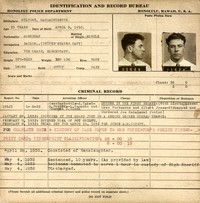 Edward Lord. Lord was one of two enlisted sailors who assisted in the kidnapping and murder of Joseph Kahahawai. Courtesy of the Honolulu Police Department. |
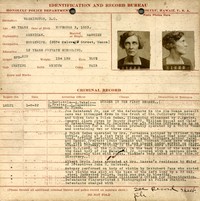 Grace Fortescue Police booking photos of Grace Fortescue after her arrest for the murder of Joseph Kahahawai. Courtesy of the Honolulu Police Department. |
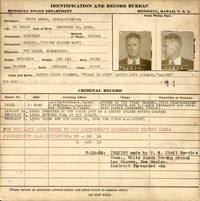 Albert "Deacon" Jones Jones was one of two enlisted sailors who assisted in the kidnapping and murder of Joseph Kahahawai. Jones confessed to a reporter in 1966 that he actually shot and killed Kahahawai. Clarence Darrow insisted during the trial that Tommie Massie pulled the trigger which was necessary for the "unwritten law" defense. Peter Van Slingerland wrote a book published in 1966 titled Something Terrible Has Happened about the case. He said he interviewed Jones for the book and Jones revealed that Kahahawai never confessed to having raped Thalia Massie and that it was Jones who shot Kahahawai and it was not an accident. Slingerland specifically asked "You shot him?" And Jones replied "You're God damn right I did." Jones referred to Kahahawai as the "black bastard." Jones also said it was Clarence Darrow's idea to "let Tommie take the rap" for the murder. Courtesy of the Honolulu Police Department. |
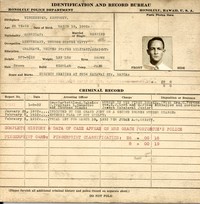 Thomas Massie. Thomas Massie, a Navy Lieutenant, was the husband of Thalia Massie. Courtesy of the Honolulu Police Department. |
 Senator Hiram Bingham. Hiram Bingham (1875 - 1956) was a United States Senator representing Connecticut. He worked to prevent Congress, angered by the situation in Hawaii, from passing legislation giving Congress more control over the Territory of Hawaii. Prior to serving in Congress, Bingham was an archaeologist, explorer, and scholar. As a lecturer at Yale he was credited with rediscovering the largely forgotten Inca city of Machu Picchu in 1911. Library of Congress Prints and Photographs Division, LC-DIG-ggbain-37008. |
 Senator Hiram Bingham of Connecticut. Hiram Bingham (1875 - 1956) was a United States Senator representing Connecticut. Bingham, who was born in Hawaii, worked to prevent Congress from using the Massie situation to pass legislation giving it much more control over Hawaii. He quickly introduced resolutions for investigation of Hawaii's administration and law enforcement. This resulted in the Richardson Report which Bingham used to introduce nine bills. None were passed into law because Hawaii promptly corrected the areas that were lax. Library of Congress Prints and Photographs Division, LC-DIG-npcc-12839. |
 Admiral William V. Pratt, Chief of Naval Operations, 17 September 1930 - 30 June 1933. On December 2, 1931, Admiral Pratt invoked the "unwritten law" when he stated that: "American men will not stand for the violation of their women under any circumstances. For this crime they have taken the matter into their own hands repeatedly when they have felt that the law has failed to do justice." The Ala Moana rape trial ended in a mistrial on December 6, 1931. Photo #: 80-G-1034138, Official U.S. Navy Photograph, now in the collections of the National Archives. |
 Admiral William V. Pratt. Admiral William V. Pratt, USN, Commander in Chief, U.S. Fleet is welcomed to Hawaii, at Honolulu on 16 July 1930. Photo #: NH 75861. Courtesy of the Naval Historical Foundation. Collection of Admiral William V. Pratt. U.S. Naval Historical Center Photograph. |
 Ray Lyman Wilbur, Secretary of the Interior. In the face of mainland hysteria about the situation in Hawaii, Wilbur, whose office was responsible for the civilian government in Hawaii, sent his executive assistant, William A. Du Puy to Hawaii to "observe the facts and report his findings." Du Puy reported his findings in a book titled Hawaii and its Race Problem which glossed over the race issues and the Ala Moana and Massie controversies. The full text of the book is available above. Wilbur was also the third President of Stanford University. Wilbur is photographed during his inspection of Boulder Canyon. RC Identifier: 293728. Records of the Bureau of Reclamation, 1889 - 1992, NARA's Rocky Mountain Region, National Archives and Records Administration. |
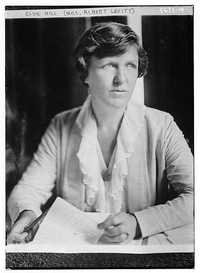 Elsie Hill. Elsie Hill was a long-term organizer and officer of the National Woman's Party (NWP). The NWP wanted to use the upcoming Massie trial to advance its fight to give women the right to serve on juries because at the time only about half the states allowed women to serve on juries. The NWP authorized Hill to contact the Fortescue family and NWP representatives urged the family to convince Grace to challenge the all-male jury that was sure to be seated for her trial. But Grace Fortescue later decided to hire Clarence Darrow. Library of Congress Prints and Photographs Division, LC-DIG-ggbain-33898. |
 Sarah Thompson Pell, Finance Chair of the National Woman's Party ca. 1910-1920. Ten years after the Nineteenth Amendment, which was ratified on August 18, 1920, gave women the right to vote only about half the states allowed women to serve on juries. The notoriety of the Massie case prompted the National Woman's Party (NWP) to use the case to advance its fight to give women the right to serve on juries. After Grace Fortescue and the others were charged with murder, Sarah Pell, who served as Finance Chair of the NWP, contacted NWP leaders and urged them to take a stand on the prosecution of Grace Fortescue by demanding she be tried by a jury of her peers - which would include women. The NWP moved quickly and just two days later, the party authorized Elsie Hill to contact the Fortescue family. A meeting was held the next day during which the NWP representatives urged the family to convince Grace to challenge the all-male jury that was sure to be seated in her case. Eventually Grace Fortescue decided to rely on the legal talent of Clarence Darrow and his co-counsel George Leisure, thus ending the NWP's attempts to enter the case. Women of Protest: Photographs from the Records of the National Woman's Party, Manuscript Division, Library of Congress, Washington, D.C. mnwp 155019. |
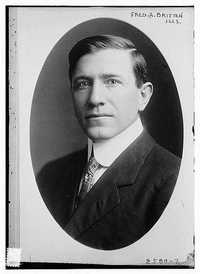 Fred A. Britten. Fred Britten, (1871 - 1946) a U.S. Representative from Illinois, was Chairman of the House Naval Committee from 1927 to 1931 and he was the ranking Republican member of the House Naval committee during the Massie case. Britten introduced a bill to create a commission government in Hawaii. Library of Congress Prints and Photographs Division, LC-DIG-ggbain-12154. |
 Kenneth McKellar. Kenneth McKellar (1869 - 1957) represented Tennessee as a United States Representative from 1911 until 1917 and as a United States Senator from 1917 until 1953. A member of the Democratic Party, McKellar was one of the most vocal critics of the situation in Hawaii. He wanted to impeach Judge Albert M. Christy because he pressured the grand jury to indict the defendants. McKellar also proposed a bill that would give the President full power to pardon the defendants immediately. Library of Congress Prints and Photographs Division, LC-DIG-ggbain-36612. |
 Kenneth McKellar. One of the most vocal critics of the situation in Hawaii was Tennessee Senator Kenneth McKellar, who presented a resolution calling for a congressional investigation. When word reached Washington, D.C. that Tommy Massie, Grace Fortescue and two sailors had been indicted for murder, McKellar demanded on the floor of the Senate that Judge Cristy, who presided over the grand jury, be impeached. Library of Congress Prints and Photographs Division, LC-DIG-ggbain-36612. |
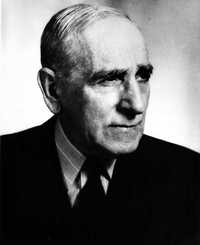 Rear Admiral Yates Stirling, Jr., USN. When the Ala Moana crisis shook Hawaii, Admiral Yates Stirling, Jr. was the commander of the 14th Naval District, which included the Hawaiian Islands and strategically important Pearl Harbor. Stirling was outraged over the alleged rape of the wife of one of his officers. He also believed the erroneous report that there had been forty sexual assaults against white women in Hawaii in the past year. Given his senior position, Stirling helped convince the decision-makers in Hawaii and those in political power in Washington, D.C. that Hawaii was unsafe for white women. |
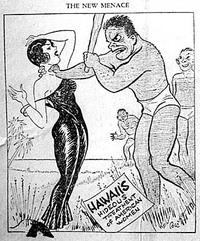 The New Menace. In response to the Massie case and the rampant rumors about white women being attacked in Hawaii, Brevities, a New York tabloid ran this drawing on their front page February 1, 1932. |
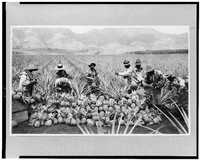 Scene on a Pineapple Plantation, Hawaii. Between ca. 1910 and 1925. Library of Congress, LC-USZ62-108295. |
 Honolulu, Hawaii c. 1910. Library of Congress Prints and Photographs Division, LC-USZ62-125408. |
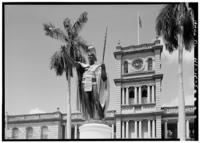 Statute of King Kamehameha 1 in front of the Aliiolani Hale. The Judiciary Building also called the Aliiolani Hale ("House of the Heavenly Chiefs") is where the two most famous trials in the history of Hawaii took place - Ala Moana rape trial and the Massie-Fortescue murder trial. Joseph Kahahawai was kidnapped as he left this building after reporting to his probation officer. It is home to the Hawaii Supreme Court. |
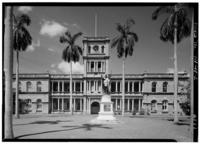 Statute of King Kamehameha I in front of the Aliiolani Hale. Joseph Kahahawai was kidnapped in front of the Aliiolani Hale building very near this famous statute of King Kamehameha I. This is also the building where both the Ala Moana rape trial and the Massie-Fortescue murder trial took place. It is now commonly known as the Judiciary Building and is home to the Hawaii Supreme Court. It is located at 417 South King Street, Honolulu, Honolulu County, HI. |
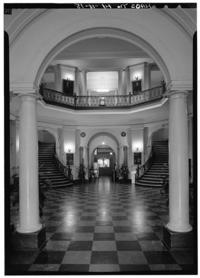 Interior of Aliiolani Hale. The Aliiolani Hale was the scene of the two most famous trials in the history of Hawaii. It is now commonly known as the Judiciary Building and is home to the Hawaii Supreme Court. It is located at 417 South King Street, Honolulu, Honolulu County, HI. |
 Ceremonial Opening of the Pearl Harbor Dry Dock in 1919. Library of Congress Prints and Photographs Division, LC-USZ62-125409. |
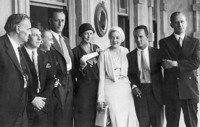 Just after Receiving Governor Judd's Commutation. From left to right: Clarence Darrow, Edward Lord, Deacon Jones, Maj. Gordon Ross, high sheriff, Grace Fortescue, Thalia Massie, Thomas Massie, and George Leisure. |
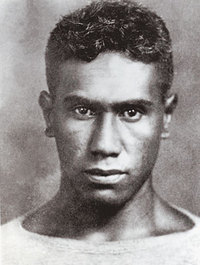 Joseph Kahahawai. Joseph Kahahawai was a 20-year-old Native Hawaiian. He was one of five defendants in the Ala Moana rape case who were accused of kidnapping and raping Thalia Massie, the wife of Navy officer Thomas Massie. On January 8, 1932, Kahahawai was kidnapped by Thomas Massie, his mother-in-law Grace Fortescue and two navy enlisted men in an attempt to get him to confess to assault on Thalia. He was murdered soon after he was kidnapped. It was the murder of Joseph Kahahawai that brought Clarence Darrow to Hawaii. |
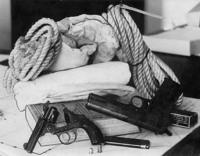 Evidence Presented in Murder Trial. Evidence presented by authorities to show that Joseph Kahahawai had been kidnapped, shot to death, and wrapped in a bloody sheet. Honolulu Advertiser. |
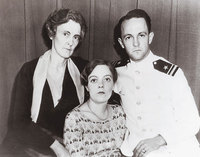 Grace Fortescue, Thalia Massie, Tommie Massie. |
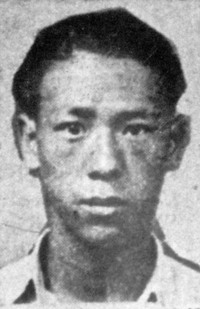 David Takai. Ala Moana rape defendant David Takai. Of Japanese descent he was 21 years old when arrested. Nicknamed Mack he lived near the other suspects in the Palama district. He was the only suspect Thalia Massie failed to identify. Photo from the Honolulu Advertiser. |
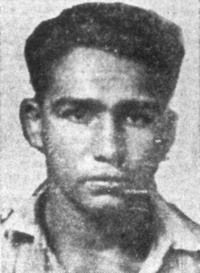 Benny Ahakuelo. Ala Moana rape defendant Ben Ahakuelo was a 20 years old Native Hawaiian. A very good athlete, he represented Hawaii in the 1931 National Amateur Boxing Championship Tournament held at Madison Square Garden in New York. Photo from the Honolulu Advertiser. |
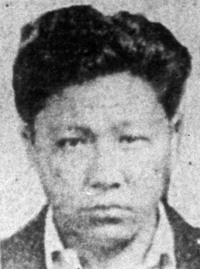 Horace Ida. Ala Moana rape defendant, Horace Ida was kidnapped December 12, 1931 by several men who were almost surely members of the U.S. Navy. He was taken to a remote location in the Nuuanu Valley and severely beaten with belt buckles in an attempt to obtain a confession for alleged rape of Thalia Massie. |
 The SS Malolo after being renamed the Queen Fredrica. http://en.wikipedia.org/wiki/Image:Queen-fredrica.jpg 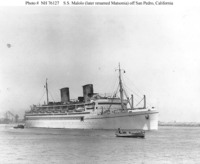 SS Malolo Underway off San Pedro, California, circa the later 1920s. Four days after their sentence was commuted Grace Fortescue, Thalia and Tommy Massy and Clarence Darrow and his wife Ruby were sneaked aboard the SS Malolo by a Navy minesweeper that pulled up alongside the ship to let the passengers enter through a cargo bay to avoid Hawaiian authorities who insisted Thalia Massie must remain in Hawaii for the retrial of the Ala Moana rape defendants. Captain Wortman of the Navy scuffled with a Hawaiian police officer to prevent him serving Thalia with a subpoena. The ship later left for San Francisco. The SS Malolo was an American Cruise liner built by William Cramp & Sons, Philadelphia in 1926 for the Matson Line. It began service to Hawaii in 1927. The ship cost $8 million dollars to build, and at the time it was the most expensive and fastest merchant ship ever built in the U.S. It was 582 feet long and included seven decks, a swimming pool, ballroom, gymnasium, and space for 650 passengers in modern cabins. It had a 27 knot cruising speed and could make the crossing from San Francisco to Honolulu in four and a half days. It was renamed several times and known as Matsonia, Atlantic, and Queen Fredrica. U.S. Naval Historical Center Photograph. 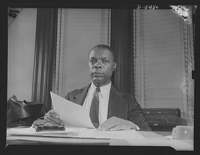 William Pickens. William Pickens was a field secretary for the NAACP at the time of the Massie trial. After the Massie verdict Prosecutor Kelley received many critical and threatening letters. Among the congratulatory letters was one from William Pickens who praised Kelley's courage and wished "more power to your kind." The letterhead of Pickens' letter featured the names of the NAACP board of directors which included the name of Clarence Darrow. David E. Stannard, Honor Killing: Race, Rape, and Clarence Darrow's Spectacular Last Case 388 (2006). At the time of this photo Pickens was the chief of the Negro Organizational Section, War Savings staff, Department of the Treasury. Library of Congress Prints & Photographs Division Washington, LC-USE6-D-005480. | ||
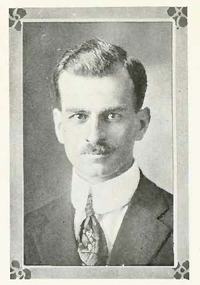 Judge Albert Cristy. Judge Albert Cristy placed considerable pressure on the grand jury to return an indictment against the defendants accused of murdering Joe Kahahawai. Eventually the grand jury returned an indictment for second degree murder against Thomas Massie, his mother-in-law Grace Fortescue and two navy sailors Edward Lord, and Deacon Jones. If not for Judge Cristy's actions it is likely that the Massie murder trial would never have taken place. |
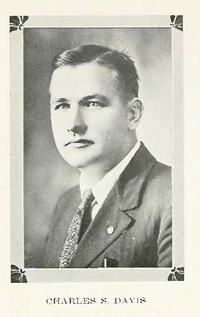 Charles S. Davis. Charles Davis was the trial judge in the Massie-Fortescue murder trial. Photo from Men of Hawaii: Being a Biographical Reference Library, Complete and Authentic, of the Men of Note and Substantial Achievement in the Hawaiian Islands Volume 1 (1921). |
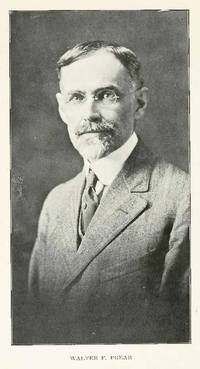 Walter F. Frear c. 1917. Walter Francis Frear (1863 - 1948) served as chief justice of the Hawaii Supreme Court and later as the third Territorial Governor of Hawaii from 1907 to 1913. He was also a member of the Hawaii Republican Party. When Albert Cristy graduated from law school in 1914 he went to work in Frear's law firm. Frear became a mentor to Cristy who would later become a judge and preside over the grand jury that indicted the murders of Joseph Kahahawai. |
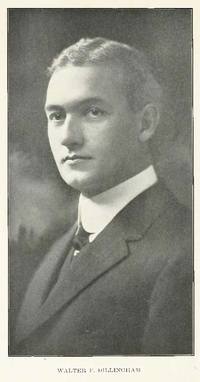 Walter F. Dillingham. Walter F. Dillingham (1875 - 1963) was one of the most influential white businessmen in Hawaii. Through the work of his Hawaiian Dredging Company, Dillingham significantly changed the shoreline of Honolulu. His company created the Ala Wai Canal had a key role in the creation of Pearl Harbor. Dillingham held racist attitudes against the non-whites in Hawaii and he strongly believed Thalia Massie’s claim that she was raped. At one point while testifying before Congress, Dillingham stated that “God had made the white race to rule and the colored to be ruled.” The Ala Moana mistrial greatly upset the Hawaiian business community. Dillingham headed a newly-formed “emergency committee” of the Honolulu Chamber of Commerce that was given a charge by the business community to clean up the police department and pursue “legal and other assistance” to track down evidence that could be used in a retrial. Just one day after the mistrial, the chamber publicly posted a $5,000 reward for information leading to a conviction. Dillingham wrote a private memo after the murder of Joseph Kahahawai in which he stated: “Unless one has lived in this community one cannot appreciate the importance of the example to the people that they have no right to take the law into their own hands. While this may be condoned under conditions which prevail where whites are in the majority, it would be a hazardous thing to given any such recognition of lynch law in our community where it is vital to stress the necessity of abiding by the laws of the country.” Early photo of Walter Dillingham from a book published in 1917. |
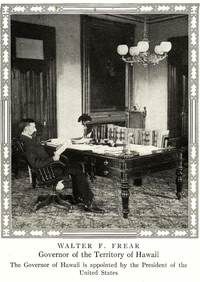 Walter F. Frear. |
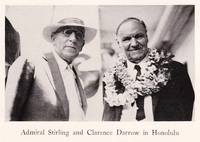 Admiral Yates Stirling Jr. and Clarence S. Darrow. Yates Stirling Jr. (1872 - 1948) held racist attitudes towards non-whites. Upon first hearing the news that the young white wife of one of his junior officers had been kidnapped an assaulted, Stirling commented, "Our first inclination is to seize the brutes and string them up on the trees. But we must give the authorities a chance to carry out the law and not interfere." |
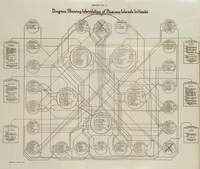 Diagram Showing Interrelation of Business Interests in Hawaii. Diagram drawn for the Richardson Report that shows how businesses in Hawaii are controlled by relatively few companies and corporate executive members. |
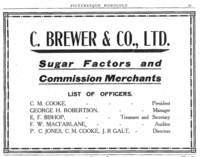 C. Brewer & Co Ltd. Ad for one of Hawaii's "Big Five" companies called sugar factors. |
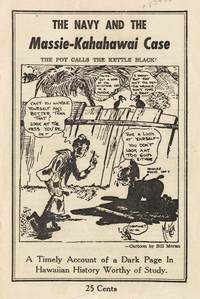 The Navy and the Massie-Kahahawai Case: A Timely Account of a Dark Page in Hawaiian History Worthy of Study. Cover from a very critical commentary about the situation in Hawaii in 1931 and 1932 during the Ala Moana rape case, the murder of Joseph Kahahawai and the subsequent murder trial. |
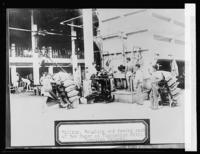 Filling, weighing and sewing sacks of raw sugar at Plantation mill, Hawaiian Islands. Between 1910 and 1920. Library of Congress Prints and Photographs Division, LC-DIG-npcc-30938. |
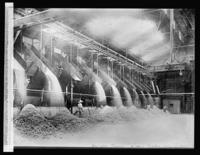 Delivering Bagasse to fire-room. Raw sugar mill. Hawaiian Islands [between 1910 and 1920]. Bagasse is a fibrous residue remaining after sugarcane or sorghum stalks are crushed to extract their juice. Library of Congress Prints and Photographs Division, LC-DIG-npcc-30854. |
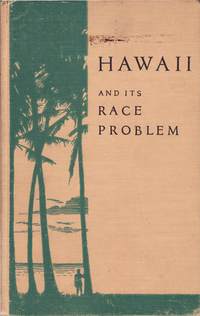 Hawaii and its Race Problem by William Atherton Du Puy. Cover from report submitted by William A. Du Puy, executive assistant, to Secretary of Interior Ray Lyman Wilbur about the situation in Hawaii. The United States Department of the Interior was responsible for the civilian government in Hawaii and Wilbur was concerned enough about the situation in Hawaii that he sent Du Puy to "observe the facts and report his findings." Du Puy reported his findings in this book which glossed over the race issues and the Ala Moana and Massie controversies. Full text of the book is available above. |
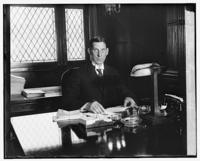 Ray Lyman Wilbur. As Secretary of Interior Ray Lyman Wilbur was very concerned about the problems in Hawaii because the Interior Department was responsible for the civilian government in Hawaii. When the Pinkerton Report was leaked, Wilbur sent a cable to Governor Judd demanding that he suppress the report because it would upset attempts to grant pardons to the defendants and because it would show that the Ala Moana defendants were innocent and that an innocent man, Joseph Kahahawai, had been murdered. Library of Congress Prints and Photographs Division, LC-DIG-npcc-17099. |
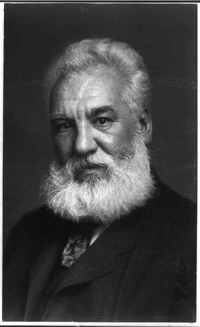 Alexander Graham Bell. Grace Fortescue, one of the murder defendants, was the niece of Alexander Graham Bell the inventor of the telephone in 1876. Library of Congress Prints and Photographs Division, LC-USZ62-14759. |
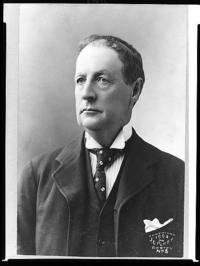 Francis G. Newlands c. 1903. In 1898, the coming Spanish-American War demonstrated the military significance of Hawaii and bolstered calls for annexing the Islands. The United States already had rights to Pearl Harbor but those in favor of annexation feared those rights could be abrogated and the interests of the United States could only be secured by annexation. On May 4, 1898, nine days after the Spanish-American War began, Representative Francis G. Newlands of Nevada introduced a joint resolution in the House of Representatives to annex the Hawaiian Islands to the United States. This would require a simple majority vote by the House and Senate. Some argued this was unconstitutional because it usurped the Senate's treaty power. Nevertheless, the House approved the Newlands Resolution on June 15, 1898 by a vote of 209 to 91. The Senate, after some secret debates, approved the resolution on July 6 by a vote of 42 to 21 with 26 senators abstaining. President McKinley signed the annexation resolution into law on July 7, 1898. Newlands later served as a Senator from Nevada. Library of Congress, LC-USZ62-35403. |
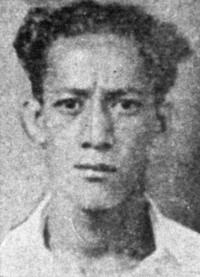 Henry Chang. Ala Moana rape defendant Henry Chang was 22 years old. Part Native Hawaiian and part Chinese, Chang had recently returned to Hawaii from working in Alaska. Honolulu Advertiser |
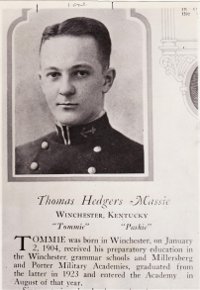 Thomas Hedgers Massie. Tommie Massie's graduation picture at the United States Naval Academy in 1927. |
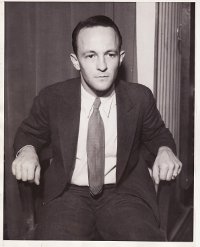 Tommie Massie. Prosecutor Kelley was very critical of Tommie Massie. He disdained Massie and all the sympathy the defense tried to generate for him. In his closing argument Kelley told the jury: "They ask you why should Massie take upon himself the blame for shooting Kahahawai. Because he couldn't hide behind the skirts of his mother-in-law. He couldn't stand up and blame these two men whom he had inveigled into this affair." Kelley blamed Tommie Massie for much of the trouble, going all the way back to the night of the party before Thalia's alleged assault: "I am going to paint you a conceited, vain, egotistical individual who is responsible for what has happened since September 12, the selfishness of the man who insisted that his wife go to this party when she did not want to go." |
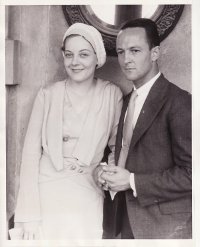 Thalia and Tommie Massie. |
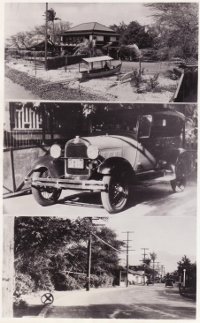 Ala Wai Inn, Suspects Car, John Ena Road Thalia Massie left a party at the Ala Wai Inn and began walking alone. She alleged she was kidnapped and raped while walking down John Ena Road. The suspect's car has the license plate 58-595. Thalia insisted she did not see the license plate number of the suspects' car. But after several interviews with police her memory improved and she claimed she saw the license plate number 58-805. |
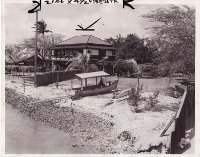 Ala Wai Inn. On the night of September 12, 1931 Thalia Massie left a party at the Ala Wai Inn and began walking alone. She later alleged she was kidnapped and raped while walking. Thalia initially told the police she left the Ala Wai at "about midnight" but during her courtroom testimony she changed this to 11:35 p.m. The time she actually left was a crucial fact because there was only a small time window when the suspects could have committed the crime. |
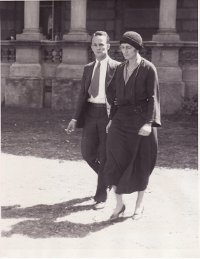 Tommie Massie and Grace Fortescue. Two of the defendants leaving court. |
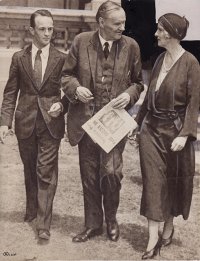 Tommie Massie, Clarence Darrow, Grace Fortescue. Photo taken during recess. |
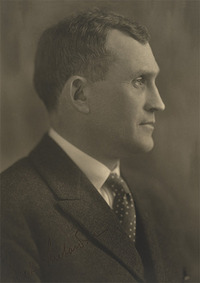 Seth W. Richardson c. 1929. On January 11, 1932, prompted by the Ala Moana trial and the murder of Joseph Kahahawai, the United States Senate adopted a resolution requesting the Attorney General to report to the Senate as early as possible on the administration and enforcement of criminal laws in the Territory of Hawaii, and whether there should be any changes in the organic law to improve the administration of justice. The Attorney General later sent Assistant Attorney General Seth Richardson to Hawaii to investigate and make a report. Richardson was assisted by FBI agents and Justice Department officials. The result of Richardson’s investigation, called the Richardson Report, was submitted to the Senate in April, 1932. Richardson and those working under him conducted a massive investigation that resulted in 3,380 pages that filled fifteen volumes but were not published. The investigators interviewed over four hundred people in various positions, such as lawyers, judges, business leaders, politicians, law enforcement, and news editors. The report also included a separate 300 page summary of conclusions and recommendations. The entire work was conducted in two months. During the first day of the trial, which began with jury selection, the federal government released the Richardson Report. Photo from the DOJ's Environment and Natural Resources Division: http://www.justice. gov/enrd/Anniversary/ Seth_Richardson_bio.html |
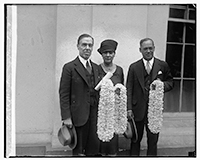 Victor Houston. Hawaii’s delegate to Congress Victor S.K. Houston. |

